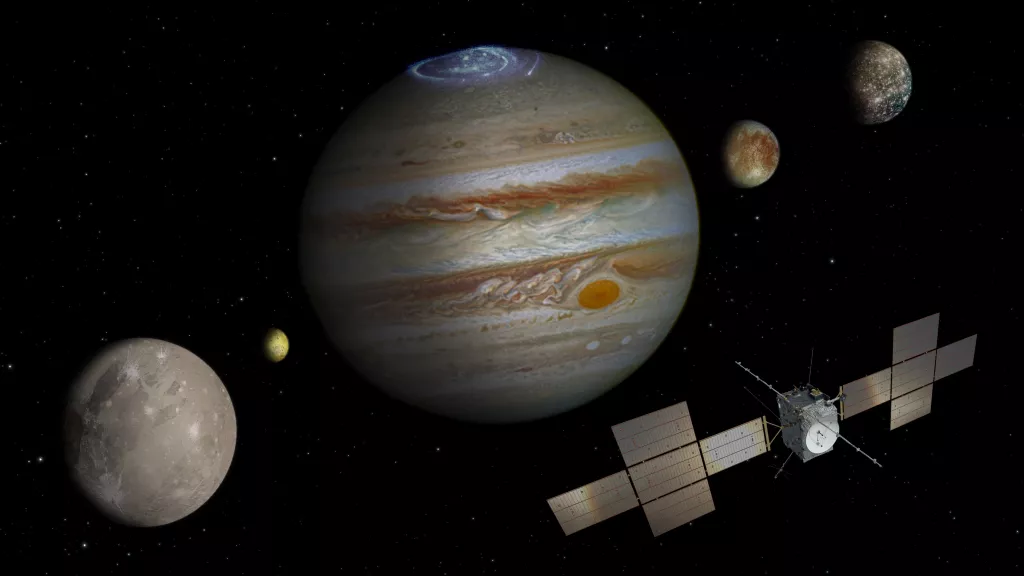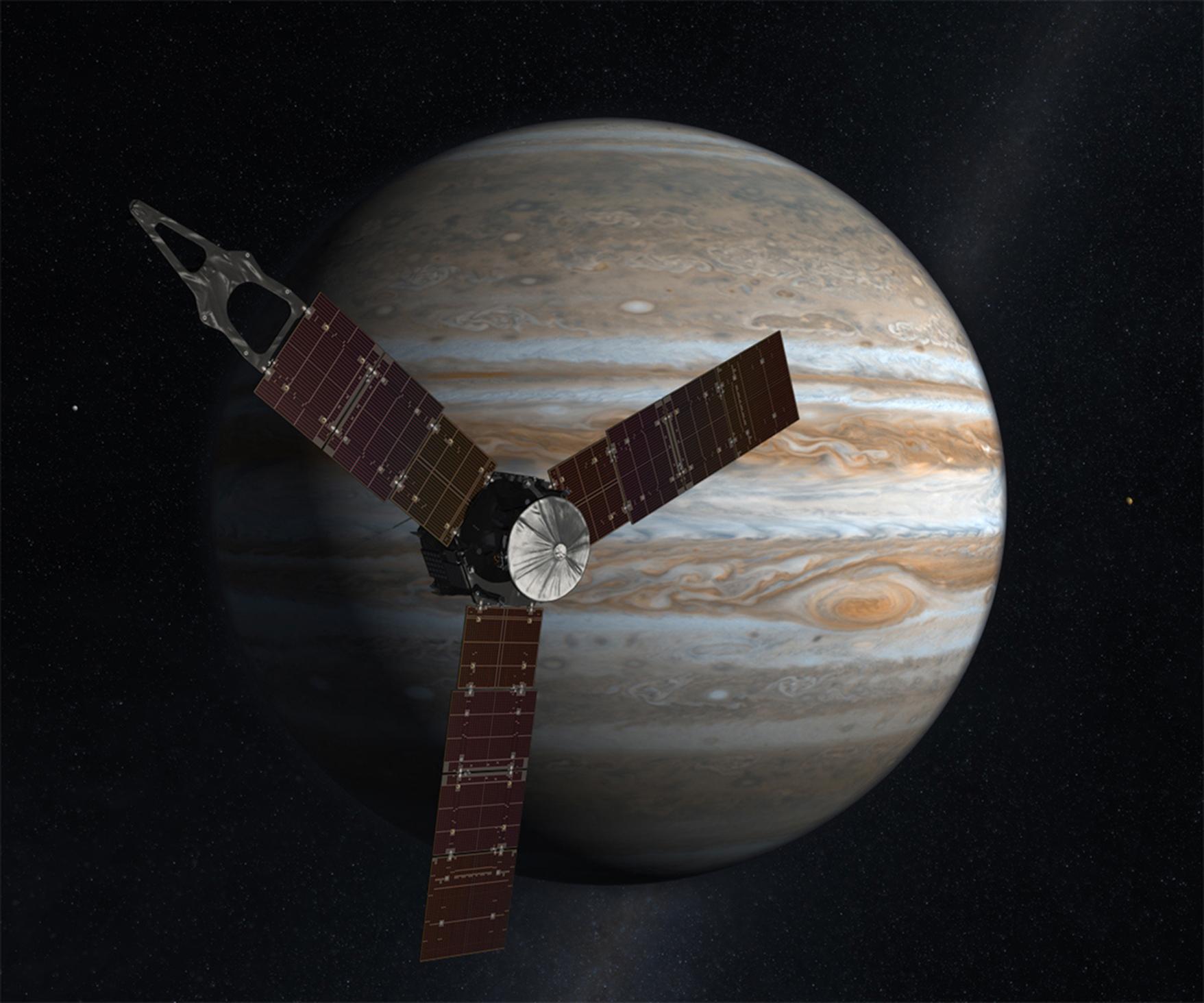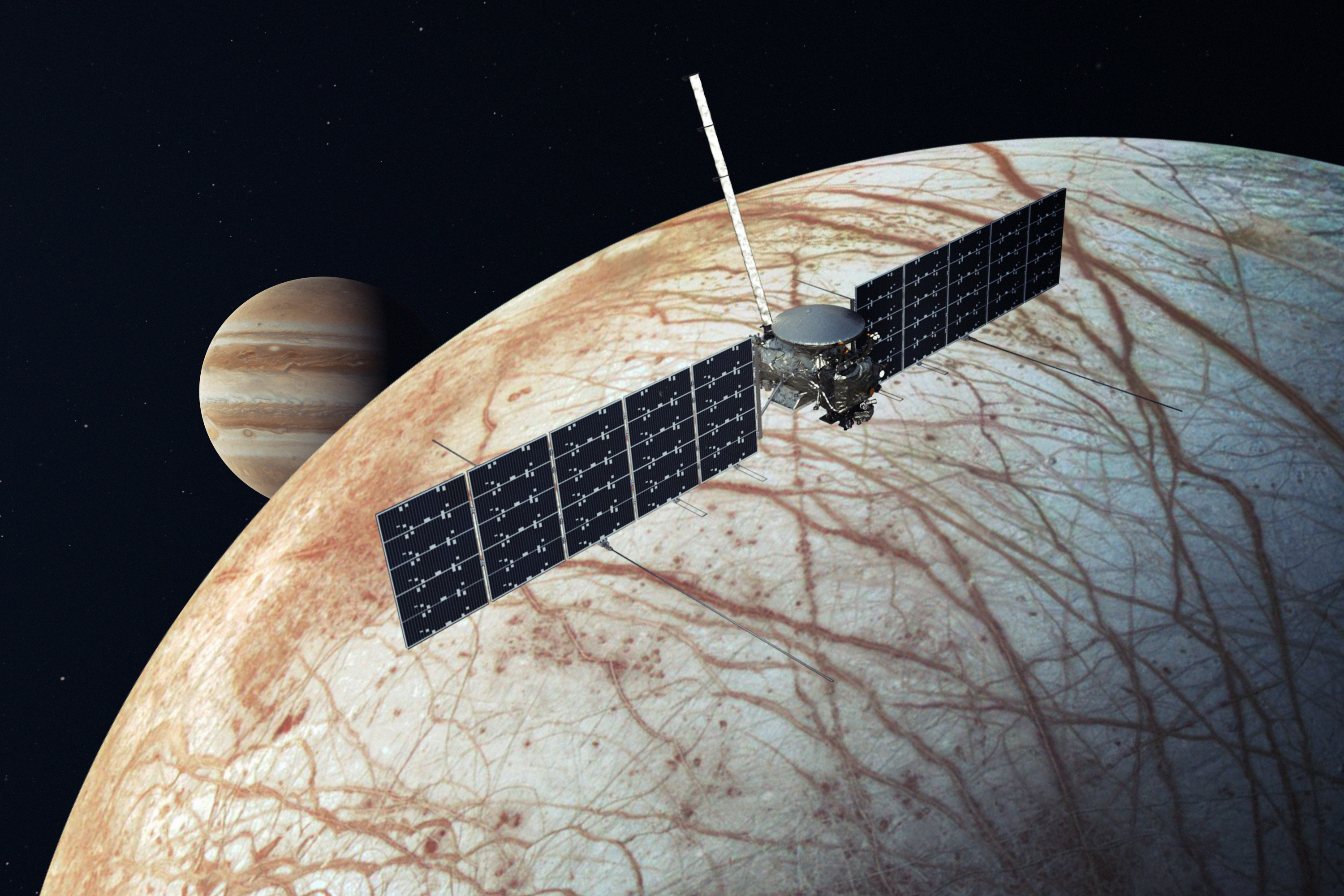ESA to send $1.6bn interplanetary station JUICE on historic eight-year voyage to Jupiter

The European Space Agency (ESA) will send its first-ever spacecraft to Jupiter tomorrow, 13 April. The launch is scheduled for 3.15pm (EET).
Here's What We Know
The interplanetary station is called the Jupiter Icy Moons Explorer (JUICE). At a cost of $1.6 billion, it will be launched into space using an Ariane 5 rocket, before heading to Jupiter on its own at 2.5km/s.

JIUCE will fly to the gas giant for 8 years and reach orbit by 2031. This is because the station's route will not go directly from Earth to Jupiter. The spacecraft will enter orbits of other planets to accelerate. Also keep in mind that the distance between Jupiter and Earth is constantly changing with time.
The National Aeronautics and Space Administration (NASA) sent Galileo and the Jupiter Polar Orbiter, aka Juno (pictured below), to Jupiter in 1989 and 2011, respectively. The former took 6 years to reach its target, while the latter took 1 year less.

Pioneer 10 is the first interplanetary station to reach Jupiter. The flight took less than two years (640 days). The record holder is Pioneer 11, which took only 606 days to reach the largest planet in the solar system.
JUICE will manoeuvre around Earth and Venus. It will then be able to orbit Jupiter's largest satellites, called Ganymede, Callisto and Europa (in that order in the image below). Scientists believe there could be oceans of liquid water and life lurking beneath the satellites' ice.

From 2031 to 2035, the interplanetary station will orbit Jupiter, passing close to the three satellites. After 2035, JUICE will de-orbit the gas giant. The station will move into orbit around Ganymede. Its special feature, apart from its size, is the presence of a magnetic field.
JUICE will not orbit the gas giant alone. NASA is due to launch the Europa Clipper interplanetary station (pictured below) in 2024. It will arrive at its destination in 2030. As the name might suggest, the station will study the Europa satellite.

The previously mentioned Juno spacecraft is currently orbiting Jupiter. Its mission will be completed in two years. But the station Lucy is on its way to the fifth planet of the solar system. The purpose of the mission is to study the Trojan asteroids of Jupiter.
Source: space